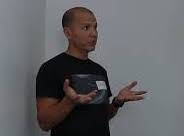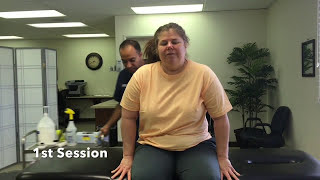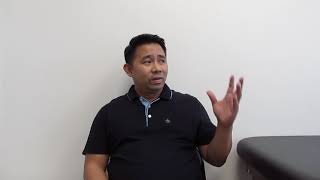Osteopathic Manipulative Therapy CPT Codes
Osteopathic Manipulative Therapy CPT Codes
Owing to the side effects associated with conventional medical and surgical treatments, a significant percentage of the global population is inclined towards an alternative form of treatment. Osteopathic manipulative therapy is a form of alternative medicine that applies a holistic approach to achieve mental, physical, and spiritual wellbeing in an individual. Somatic dysfunction is referred to the impairment of muscles, joints, bones, myofascial structures, and the associated neurovasculature. Osteopathic manipulative therapy involves the assessment of musculoskeletal disorders via palpation, followed by hands-on manipulation of the components of the musculoskeletal system in order to treat the somatic dysfunction. This therapy improves the limited range of movement and alleviates pain and tenderness in the somatic dysfunction. [1]
CPT Codes and Osteopathic Manipulative Therapy
CPT codes refer to the Current Procedural Terminology codes, which are used to report services offered and procedures performed by qualified healthcare providers, including the doctors of osteopathic medicine. CPT is a list of codes composed of numbers and alphabets and is an integral part of level I of the HCPCS (Healthcare Common Procedure Coding System). CPT codes are the preferable mode of reporting healthcare procedures in the Centers for Medicare and Medicaid Services (CMS), the federal healthcare program.
CPT codes are classified into three categories based on the procedures they represent. The categories of CPT codes are listed below.
CPT-Codes der Kategorie I
This category includes the codes which represent the U.S. Food and Drug Administration–approved procedures and services. These procedures are commonly practiced by healthcare providers. The CPT codes in this category are released once per year and are composed of five numerals. For instance, the CPT code of category I, 29580, refers to the post-operative dressing of the lower limb, also known as Unna boot.
CPT-Codes der Kategorie II
These CPT codes are used to track the patient attributes and the quality of the examination, evaluation, and treatment provided. For this reason, category II CPT codes are also called supplementary tracking codes. The codes are composed of 4 numerals and a letter ‘F’ at the end. For example, 2029F indicates that the healthcare provider has performed a complete physical skin exam. These codes are released thrice a year.
CPT-Codes der Kategorie III
While the above two categories are permanent, category III comprises temporary CPT codes. These codes are used to report any new advancements in the field of healthcare. Category III CPT codes are released twice a year. As the codes are approved by the FDA, and their use is validated by the health practitioners, the codes are added to category I of permanent codes. If the codes are not added to category I within five years of their release, the codes are eliminated. [2]
Osteopathic manipulative therapy also employs CPT codes to report and bill the evaluation and treatment procedures. The range of CPT codes for osteopathic manipulative therapy is 98925-98929.
The description of these codes is given in the table below. [3]
CPT-Code | Abrechnungsbeschreibung der osteopathischen manipulativen Therapie |
| 98925 | Osteopathic manipulation (1 to 2 body regions are involved) |
| 98926 | Osteopathic manipulation (3 to 4 body regions are involved) |
| 98927 | Osteopathic manipulation (5 to 6 body regions are involved) |
| 98928 | Osteopathic manipulation (7 to 8 body regions are involved) |
| 98929 | Osteopathic manipulation (9 to 10 body regions are involved) |
ICD-10-Codierungssystem
Die Internationale Klassifikation der Krankheiten 10th Edition (ICD-10) ist eine komplexe, aber umfassende Kodierung, die verwendet wird, um Tausende von Diagnosen und durchgeführten Behandlungsverfahren zu melden, wobei der Schwerpunkt auf diagnostischen Dienstleistungen liegt. Die ICD-10-Codes bestehen aus sieben Zeichen, die sowohl Zahlen als auch Buchstaben enthalten. Die Aufschlüsselung eines ICD-10-Codes ist wie folgt angegeben. [4]
S42.321A | ||
| S42 | Kategorie | Dislozierte Querfraktur |
| 3 | Weil | Fraktur des Humerus |
| 2 | Standort | Schaft des Humerus |
| 1 | Lateralität | Rechter Arm |
| EIN | Verlängerung | Geschlossene Schulter |
Die ICD-10 kodiert für osteopathische manipulative Therapie reichen von M99,00 bis M99,09 und sind in der folgenden Tabelle angegeben. [3]
ICD-10-Code | Abrechnungsbeschreibung der osteopathischen manipulativen Therapie |
| M99.00 | Somatische Dysfunktion der Kopfregion |
| M99.01 | Somatische Dysfunktion der Halswirbelsäule |
| M99.02 | Somatische Dysfunktion der Brustregion |
| M99.03 | Somatische Dysfunktion der Lendengegend |
| M99.04 | Somatische Dysfunktion der Sakralregion |
| M99.05 | Somatische Dysfunktion der Beckenregion |
| M99.06 | Somatische Dysfunktion der unteren Extremität |
| M99.07 | Somatische Dysfunktion der oberen Extremität |
| M99.08 | Somatische Dysfunktion des Brustkorbs |
| M99.09 | Somatische Dysfunktion, die das Abdomen und die übrigen Regionen betrifft |
Kodierungsrichtlinien für die osteopathische manipulative Therapie
Die osteopathische manipulative Therapie wird von qualifizierten Gesundheitsdienstleistern an Patienten durchgeführt, bei denen eine somatische Dysfunktion durch Analyse der Anamnese und körperliche Untersuchung diagnostiziert wird. Die folgenden Richtlinien sollten von den Ärzten der osteopathischen Medizin bei der Kodierung der Leistungen berücksichtigt werden.
- Die CPT-Codes in der osteopathischen manipulativen Therapie kodieren nur für die Eingriffe, die am Patienten durchgeführt werden.
- Die Bewertungs- und Managementleistungen, die über den Rahmen osteopathischer manipulativer therapeutischer Verfahren hinausgehen, werden unter Verwendung des Modifikators 25 berichtet und dokumentiert. Modifikator 25 wird verwendet, wenn die Bewertungs- und Verwaltungsdienste am selben Tag von demselben Arzt erbracht werden, obwohl es sich um unterschiedliche Patienten handeln kann.
- Trotz der ähnlichen Ätiologien und Symptome dieser Dienste und der osteopathischen manipulativen Therapie ist eine separate Dokumentation der Notfall- und Managementdienste erforderlich.
- Während die Ursachen und Symptome im Abrechnungsbeleg separat ausgewiesen werden, ist eine Differenzialdiagnose nicht erforderlich, wenn sowohl Behandlung als auch Beurteilung und Management am selben Tag durchgeführt werden. [5]
Fazit
Ein gut definiertes Codierungssystem ist ein integraler Bestandteil der Einrichtungen des Gesundheitswesens. Das CPT-Codierungssystem besteht aus verschiedenen Folgen von fünf Zeichen, einschließlich Alphabeten und Zahlen, die von Gesundheitsdienstleistern, Versicherungsunternehmen und Epidemiologen zum Sammeln statistischer Informationen verwendet werden. Die von der FDA zugelassenen Gesundheitsverfahren sind durch CPT-Codes der Kategorie I codiert. Andererseits sind die alphanumerischen ICD-10-Codes sieben Zeichen lang und werden hauptsächlich zum Melden diagnostischer Verfahren verwendet. Die osteopathische manipulative Therapie ist eine Art Alternativmedizin, die mechanische Kräfte zur Behandlung somatischer Dysfunktionen einsetzt. Ähnlich wie bei jedem anderen Fachgebiet des Gesundheitswesens verwendet auch die osteopathische manipulative Therapie CPT- und ICD-10-Codes für die Berichterstattung über die Verfahren. Bewertungs- und Verwaltungsdienste können mit Modifikator-25 gemeldet werden.
Verweise
- https://www.ncbi.nlm.nih.gov/pmc/articles/PMC7381089/
- https://www.ncbi.nlm.nih.gov/pmc/articles/PMC3865623/
- https://www.cms.gov/medicare-coverage-database/view/article.aspx?articleId=56954&ver=3
- http://www.icd10codesearch.com/training.php
- https://www.cms.gov/medicare-coverage-database/view/article.aspx?articleId=52435&ver=9&SearchType=Advanced&CoverageSelection=Local&ArticleType=BC%7CSAD%7CRTC%7CReg&PolicyType=Both&s=All&CptHcpcsCode=98929&kq=true&bc=EAAAABAAEAAA&
Osteopathic Manipulative Therapy Online Course

Betrachten
Behandeln Sie die Ursache des Problems!
- Schnelle Ergebnisse
- Einfach zu verwenden
- Ergonomisch gestaltet
- Natürlicher ganzheitlicher Ansatz
- Behandlung der Grundursache des Problems
- Selbstgesteuertes Online-Training
- Erfunden von einem Arzt, der chronische Schmerzen hatte
- Gestützt durch über 45 Studien
Ärzte empfehlen ASTR














